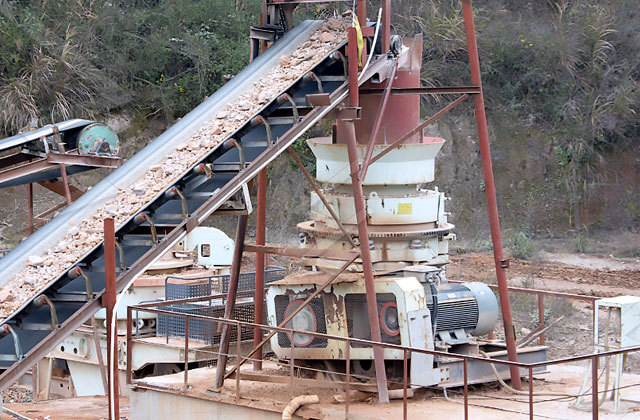Equipment required for granite crushing
Granite is one of the hardest and most durable natural stones, making it a popular choice for construction and decorative purposes. To transform raw granite into valuable aggregates or fine materials, specialized crushing equipment is essential. The right machinery ensures efficiency, high output, and superior product quality. Here’s a breakdown of the essential equipment required for granite crushing:
Primary Crusher – Jaw Crusher
A jaw crusher is typically the first step in the granite crushing process. It is designed to handle large rocks, breaking them down into manageable sizes. With its robust construction and powerful crushing force, a jaw crusher can effectively crush hard granite into smaller, uniform pieces. Its adjustable settings allow for different output sizes, providing flexibility for various applications.

Secondary Crusher – Cone Crusher
For further size reduction, a cone crusher is the ideal choice. It excels at crushing medium to high-hardness materials like granite. Its design ensures consistent output, high productivity, and minimal wear and tear. The cone crusher uses a rotating mantle to compress the granite against a fixed concave, ensuring precise and uniform crushing. Its hydraulic system also enables quick adjustments, enhancing operational efficiency.
Tertiary Crusher – Impact Crusher or Vertical Shaft Impact Crusher (VSI)
To achieve finer materials or machine-made sand, a tertiary crusher is essential. An impact crusher is suitable for shaping and refining the output, producing high-quality aggregates. Alternatively, a Vertical Shaft Impact Crusher (VSI) is used for creating machine-made sand with excellent particle shape and gradation. The VSI’s high-speed rotor propels granite against anvils or rock beds, creating finely crushed material ideal for concrete and asphalt production.
Vibrating Screen
After crushing, the granite needs to be sorted into different sizes. A vibrating screen efficiently separates crushed granite into multiple grades. Its adjustable mesh sizes allow precise classification, ensuring that the final product meets specific requirements. This equipment is crucial for producing consistent and high-quality aggregates.
Conveyors
To maintain a smooth and efficient workflow, conveyors are required to transport granite between different stages of crushing and screening. They minimize material handling time and ensure a continuous production line. High-strength belts and adjustable speeds help optimize productivity and reduce operational costs.
Dust Collection System
Granite crushing generates dust, which can be harmful to workers and the environment. A dust collection system keeps the work area clean and safe by capturing airborne particles. This improves visibility, reduces health risks, and ensures compliance with environmental regulations.
Control System
Modern granite crushing plants are equipped with advanced control systems for automated operations. These systems monitor and adjust equipment parameters in real-time, enhancing efficiency and reducing energy consumption. They also provide valuable data for predictive maintenance, minimizing downtime.
A complete granite crushing plant requires a combination of robust and reliable equipment, including jaw crushers, cone crushers, impact crushers, vibrating screens, conveyors, dust collectors, and control systems. Choosing the right equipment not only maximizes productivity but also ensures the highest quality output. Whether you’re setting up a new plant or upgrading an existing one, investing in advanced granite crushing machinery is key to staying competitive in the construction and aggregates industry.
